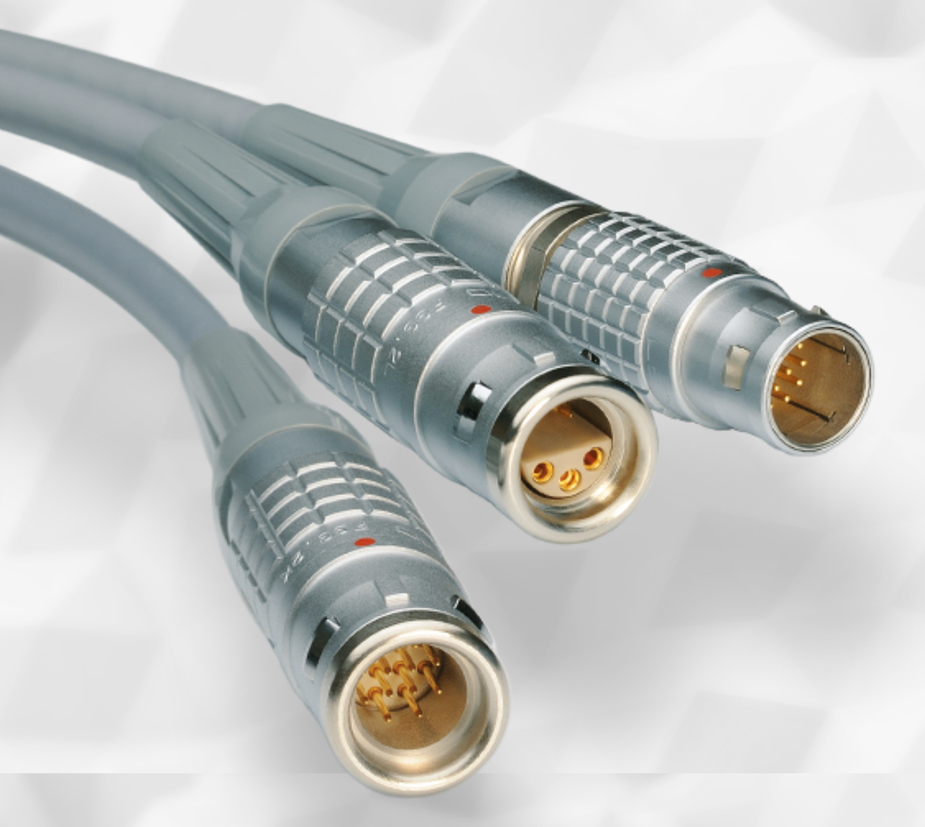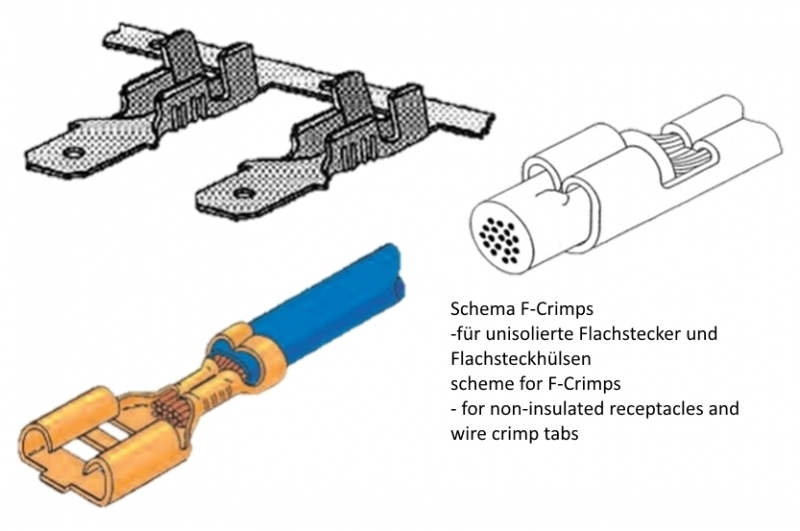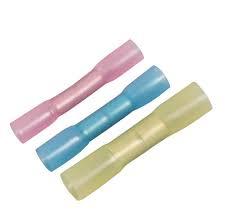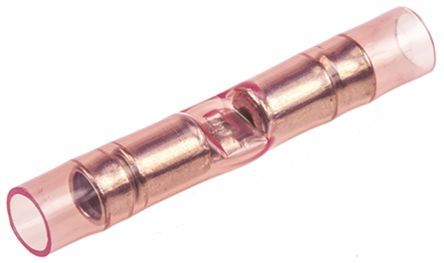Yes, the milspec ones are bulky, and finding the male and female halves in cable entry versions is a challenge. Even working out the part numbers is a nightmare 
There is a halfway point: the semi-plastic commercial versions of these.
Anyway, on the thread title, I would solder rather than crimp (and use heatshrink sleeving and proper cable support, obviously) if I was doing it at home, and probably crimp if I was doing it in the aircraft (but cable support is still needed; crimped joints will still fail under vibration… they just take longer than soldered ones  ).
).
when I was an electrical engineering student, we had an endless supply of electronics components available to us in the labs.
I remember staring in awe at the beautifully machined LEMO stuff – the only drawers we students were not allowed to dig into without asking.
It was like the caviar of electronics.

LEMO is located right across the street from the Swiss Federal Institute of Technology – I smile every time I drive by… a true icon…
Sorry for the thread drift!
Coming back to the crimping vs soldering topic: as the time passes, I tend to use more crimping, but in practice I need to use both anyway, as some parts are solder-only, others are crimp-only, and sometimes the choice is affected by external circumstances. At least soldering is infinitely more versatile than crimping, and good crimping tools aren’t cheap. However, both processes require a fair amount of knowledge and skill to do properly. The choice of materials for contacts is very wide and it’s very important to select the correct ones.
Very old solder joints may easily break. Sometimes it’s the solder wicking up the stranded wire, which eventually breaks off a few millimeters from the joint if left without a proper strain relief. On the other hand, it looks like some solders tend to get brittle with age, being still fine after a decade but starting to fail after 30-40 years. I don’t know whether this has to do with (re)crystallisation or corrosion (possibly from an aggressive flux not completely removed), but in a recent aeroplane job I saw three solder joints from 1990 break apart when gently pulled.
Peter wrote:
Pressed contacts are awful, although they are used quite a lot in avionics.
Not all of them are so awful. In particular, B-crimp (also known as F-crimp) with open-barrel stamped contacts

has an enourmous amount of industry experience behind it, and is fantastically reliable when done properly and the proper materials are used. Importantly, the second set of tabs crimps the wire insulation and thus provides an automatic strain relief. Everyone has seen these crimps on FASTON terminals and the like, but there are also tiny ones for D-sub and Deutsch connectors. For frequently disconnected connectors, stamped contacts of phosphor bronze may even be more reliable than machined ones.
What I definitely don’t want to use is pre-insulated crimping contacts. The best of them, like the PIDG series by TE, are optimal when you need to do 1000 identical crimps a day and have the proper equipment. However, for casual repairs I would only use non-insulated parts and then protect them with a heat-shrink tube if necessary. Incidentally, a good heat-shrink tube should have a sufficiently high temperature rating (don’t use PVC ones!) and preferably a layer of melting glue on the inside. There is even a PTFE shrink tubing, but it can’t have the glue and its shrink ratio is small, 1.5:1 to 2:1, whereas polyolefin can go as high as 4:1.
Ultranomad wrote:
has an enourmous amount of industry experience behind it, and is fantastically reliable when done properly and the proper materials are used.
Agreed. I happily use this type regularly. That said, while diagnosing an engine problem on my Polaris Ranger all terrain vehicle (with Bosch electronics) I was not surprised to find that the engine problem was really an electrical problem. The reason for the open circuit was design horrifying; Bosch had used the type of crimp connector shown above, but instead of the strain relief crimp capturing the wire insulation, Bosch included a silicone waterproofing washer between the crimp and the wire insulation. The silicone washer [probably] kept the water out, but permitted rather free movement of the wire insulation under the crimp, so a number of wires were open circuit. It was a lot of work to fix (reaching down into the engine room of the machine).
When I attended a Cessna aging aircraft symposium in Wichita many years ago, Cessna presented the results of deconstructing two aged Cessna twins. They said that the structures were surprisingly good, it was certainly the wiring which was terrible. The presenter paused, and turned to us in the audience and said: “If you’re going to do a major rebuild on a Cessna, rewire it.”. I agree with him! It is a lot of work to chase and repair a wiring fault, so take the extra time to (a) use the components as their manufacturer intended, and (b) do high quality work with them. There is never a time saving with quick, careless wiring….
On the other hand, it looks like some solders tend to get brittle with age, being still fine after a decade but starting to fail after 30-40 years. I don’t know whether this has to do with (re)crystallisation or corrosion (possibly from an aggressive flux not completely removed), but in a recent aeroplane job I saw three solder joints from 1990 break apart when gently pulled.
I have never seen that, and I have things I made in the early 1970s.
Sometimes it’s the solder wicking up the stranded wire, which eventually breaks off a few millimeters from the joint if left without a proper strain relief.
Yes, without strain relief it will break, but so will crimped terminals; they just take a lot longer so the warranty on the job has a chance to expire 
Those 0.25" crimp terminals above are good but they can be a bastard to connect or disconnect, often needing so much force that you risk damage of the item they are attached to.
If you’re going to do a major rebuild on a Cessna, rewire it
I am sure that’s right, looking at a common standard of wiring (horrible)  I have no idea what Cessna or Piper factory wiring is like but Socata did theirs very well.
I have no idea what Cessna or Piper factory wiring is like but Socata did theirs very well.
Pilot_DAR wrote:
They said that the structures were surprisingly good, it was certainly the wiring which was terrible. The presenter paused, and turned to us in the audience and said: “If you’re going to do a major rebuild on a Cessna, rewire it.”. I agree with him! It is a lot of work to chase and repair a wiring fault, so take the extra time to (a) use the components as their manufacturer intended, and (b) do high quality work with them. There is never a time saving with quick, careless wiring…
I don’t currently have any data for aircraft certified under FAR, but many older aircraft from the Eastern Bloc had the wiring with PVC insulation (a no-no by today’s standard) and noticeably thicker conductors than typically used today. Also, even in the light aircraft, one could encounter e.g. artificial horizons taking 115 V 400 Hz 3-phase power from a rotary inverter. Rewiring and converting them to new instruments, LED lighting, etc. can save weight and improve reliability a lot. According to my back-of-the-envelope calculation, doing so plus changing the lead-acid battery to a LiFePO4 one in a Zlin 142, a two-seat aerobatic aircraft with a MTOW of 1030 kg, can save about 30 kg of weight.
Peter wrote:
I have never seen that, and I have things I made in the early 1970s.
I have never seen it on indoor equipment, maybe it’s the exposure to the elements that did it – the aircraft in question saw no hangarage for at least 10 years, and believe it or not, these joints were not even insulated, merely out of reach. All the three were in the panel lighting circuitry.
I prefer crimping where possible – the big problem is the cost of the correct crimp tools; a few years ago a straightforward single use AMP terminal crimper would cost at least £130. The correct tool will ‘mould’ the plastic around the insulation thus providing good strain relief. The general purpose crimp tools will only just flatten the terminal/butt splice and is likely to work lose with vibration.
@jxk, you are obviously talking of pre-insulated terminals/splices, and these come in different varieties. The opaque red/blue/yellow ones

are outright unacceptable for aircraft (they have PVC insulation); personally, I wouldn’t use them on the ground, either. Even with the best tool, you won’t get proper strain relief with a plastic sleeve alone, it will eventually wiggle loose. If you want real strain relief rather than its imitation, you essentially have two choices:
- the ones with glue-lined heat-shrink insulation (cheap and available everywhere, usually designated BHT)

You crimp the wire, then heat up the plastic sleeve, which shrinks and sticks to the wire insulation.
- TE PIDG or its knock-offs.

These ones have a short thick-walled tube in the middle to crimp the wire, and a longer thin-walled metal tube that’s crimped on the wire insulation for strain relief; the plastic outer sleeve is for insulation only. They require a special crimping tool indeed, which provides a reliable and stable crimping. Unlike the former ones, these splices are not sealed hermetically! Their only real advantage is that everything is achieved in one crimping operation, so in industrial settings you can make lots of crimps very quickly.
Over 25 years I have used all the different types of terminals etc – I was trying to make the point that with correct tool you can achieve a really good reliable connection. Of course the only option on D connectors is solder and heat shrink. The Molex tool for the Garmin pins are again not cheap but provide a satisfactory outcome.
I hate soldering in the aircraft. If I have to crimp something in “aerobatic” conditions I still can keep normal quality but to go with soldering gun, solder and chemistry somewhere under the panel…….